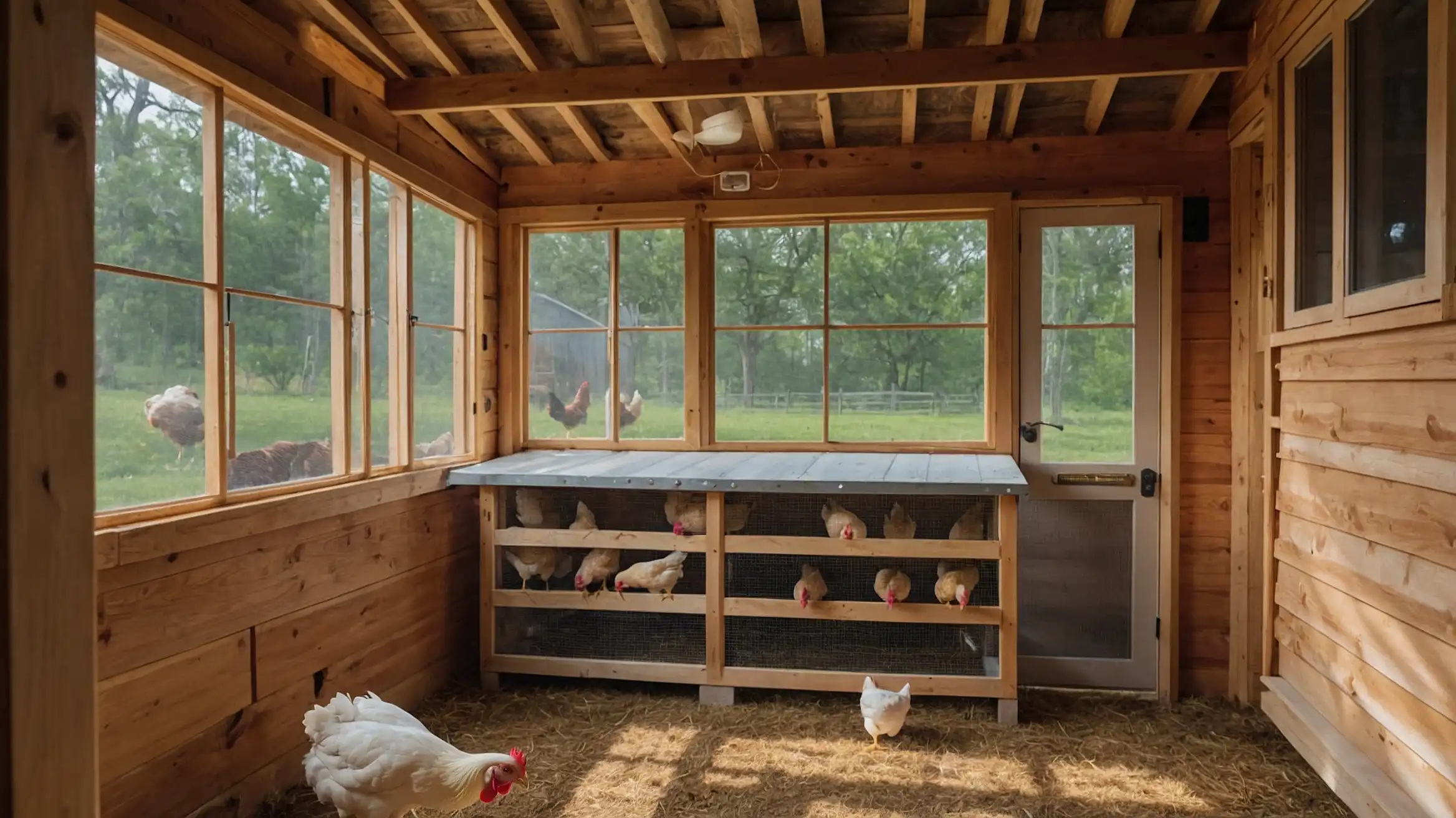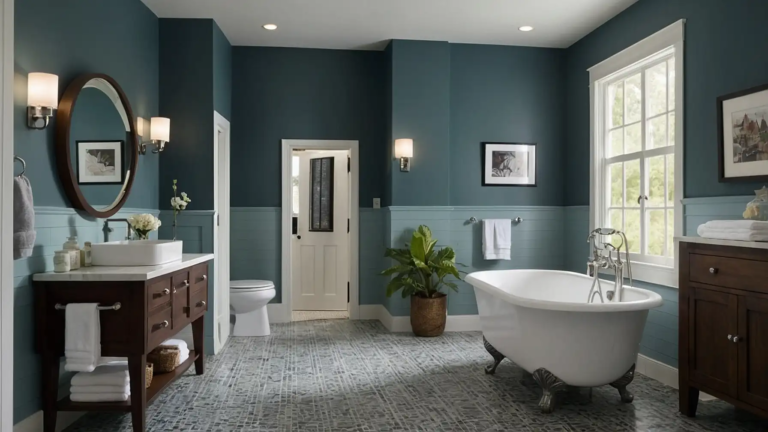21 Stunning Chicken Coop Interior Designs to Transform Your Flock’s Home
Thinking about upgrading your chicken coop’s interior? You’re in the right place!
Your feathered friends deserve a comfortable, functional home that makes egg collection easy and keeps them healthy and happy.
Modern chicken keepers are getting creative with their coop interiors, combining practicality with style.
From innovative nesting box designs to clever roosting solutions, these ideas will inspire your next coop makeover.
Let’s explore 21 fresh interior design ideas that will revolutionize how you think about chicken housing!
1: Vertical Space Maximizer
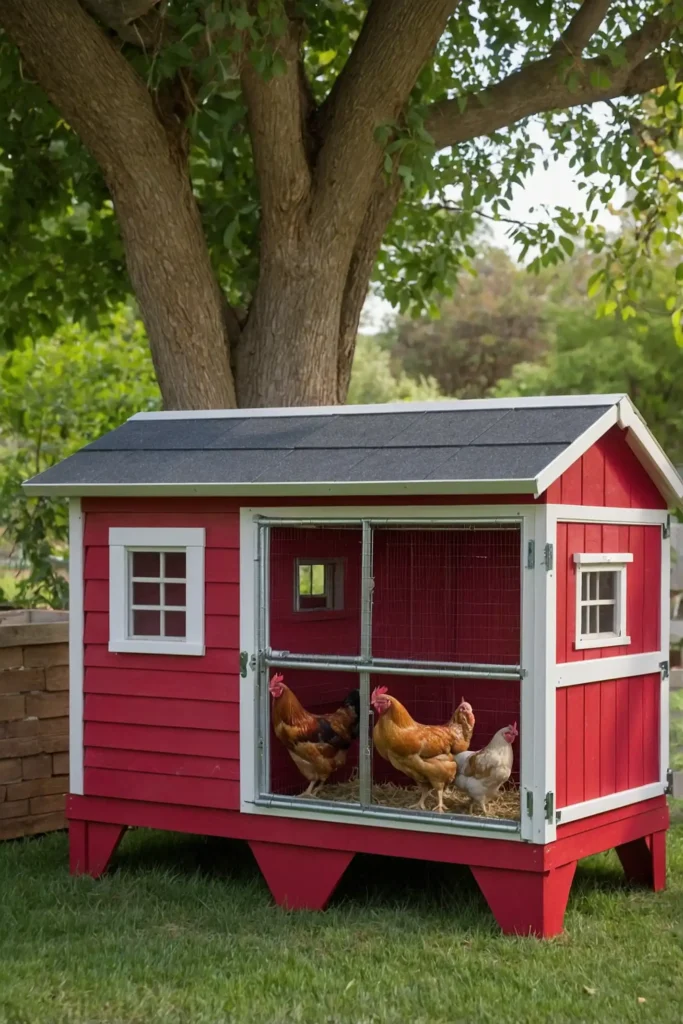
Transform your coop’s unused vertical space with staggered roosting bars at different heights. This mimics your chickens’ natural desire to perch up high at night.
Place the highest roost at least 2 feet from the ceiling to prevent head injuries when chickens jump.
Make each roost bar 2-3 inches in diameter for the most comfortable grip.
Utilize the space underneath for storage bins containing feed or bedding materials.
2: Modular Nesting Box System
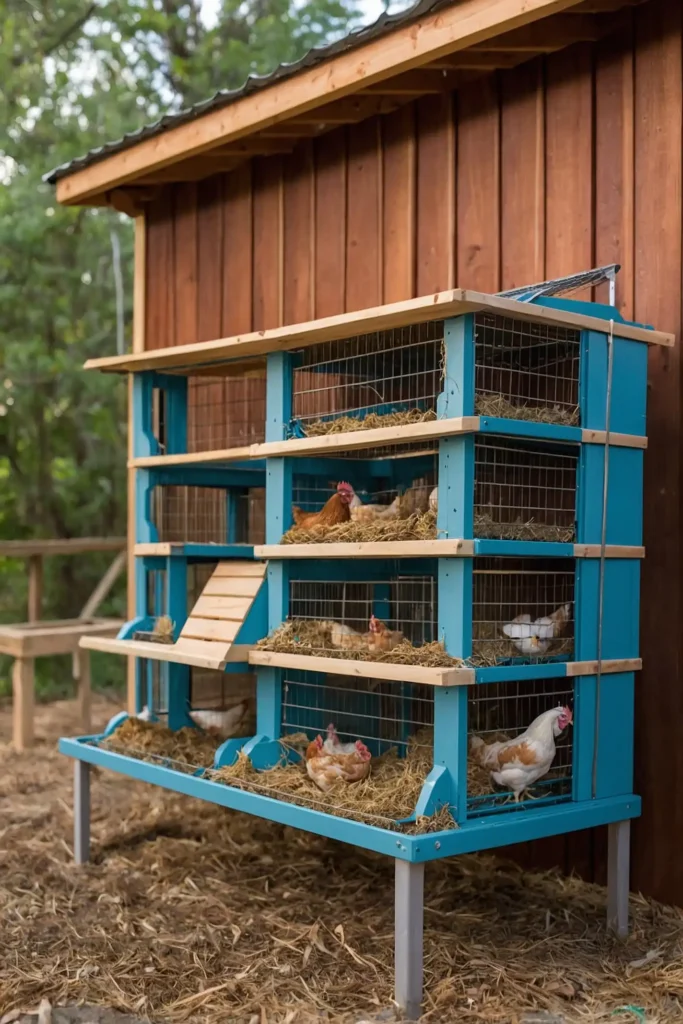
Create a nesting box system that you can reconfigure as your flock grows. Use removable dividers to adjust the size of each box based on your hens’ preferences.
Line each box with easy-to-clean plastic trays that you can slide out for quick maintenance.
Add curtains across the front for privacy, which helps reduce egg-eating behaviors.
Mount the entire system on brackets so you can adjust the height seasonally.
3: Drop-Down Cleaning Tray
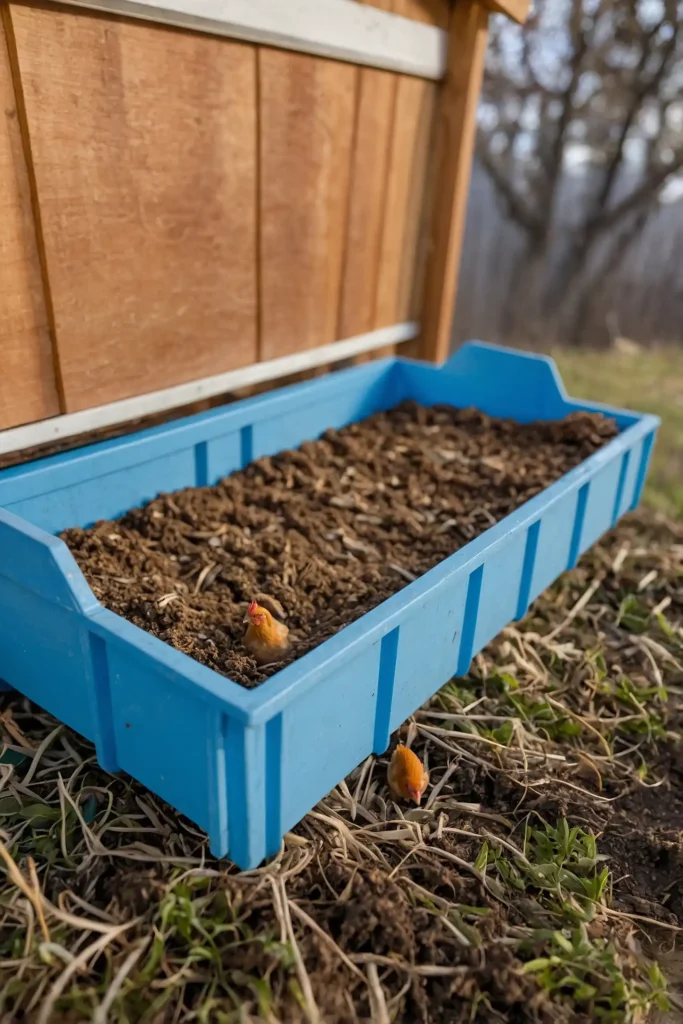
Install a removable tray beneath the roosting area that collects droppings overnight.
The tray slides out from the exterior of the coop, allowing you to clean without disturbing your chickens.
Coat the tray with diatomaceous earth to reduce odors and pests.
This system dramatically reduces your weekly cleaning time while keeping ammonia levels low.
Replace traditional bedding with a thin layer of sand on the tray for easier cleaning.
4: Window Box Herb Garden
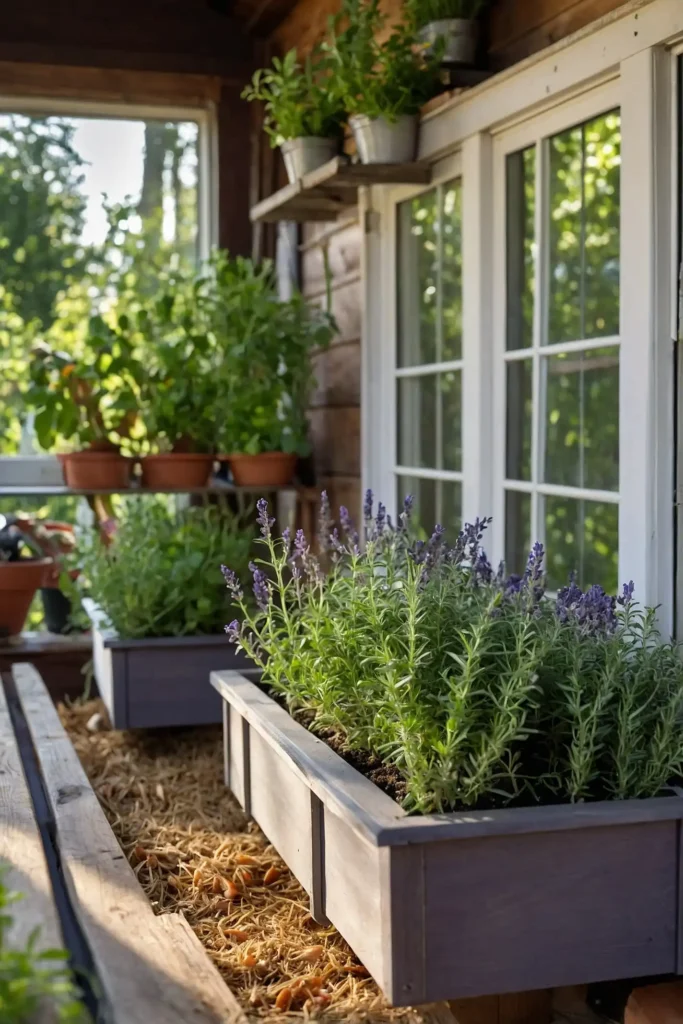
Mount small planter boxes beneath interior windows to grow fresh herbs that naturally repel parasites.
Lavender, mint, and rosemary not only deter pests but add a pleasant aroma to the coop.
The herbs receive plenty of sunlight through the windows while staying protected from pecking.
Your chickens benefit from improved air quality and fewer pest problems.
Rotate different herbs seasonally for year-round protection.
5: Solar-Powered Ventilation System
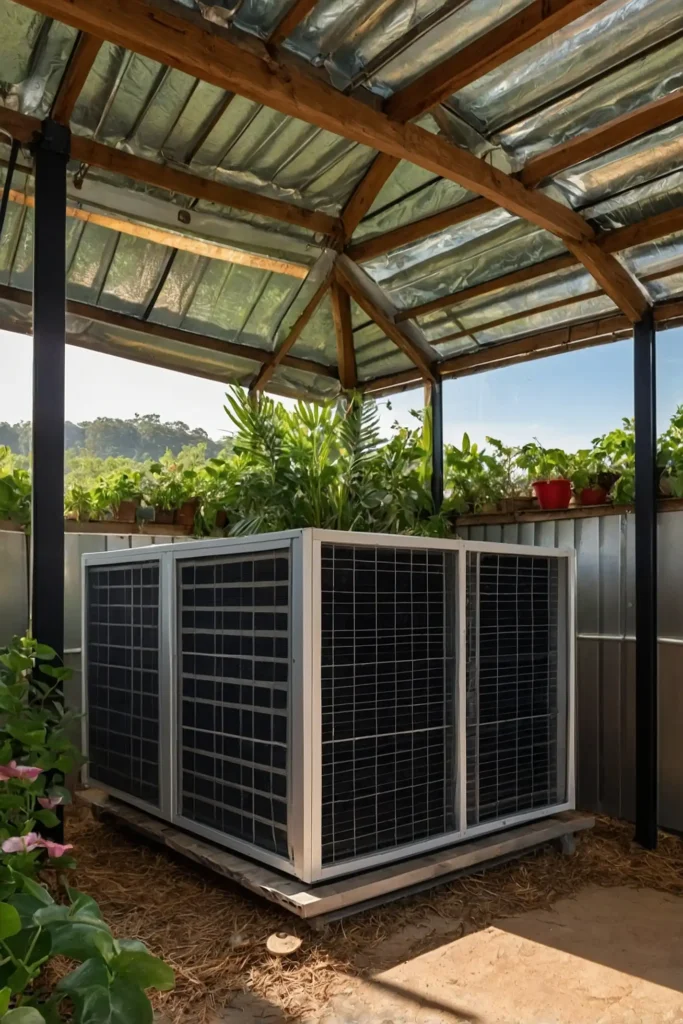
Install small solar panels that power quiet computer fans for improved air circulation.
Position intake fans near the floor and exhaust fans near the ceiling to create effective cross-ventilation.
This system removes excess moisture and ammonia without creating drafts. Add a simple thermostat to adjust fan speed based on temperature.
The improved air quality significantly reduces respiratory issues in your flock.
6: Integrated Feed Storage Solutions
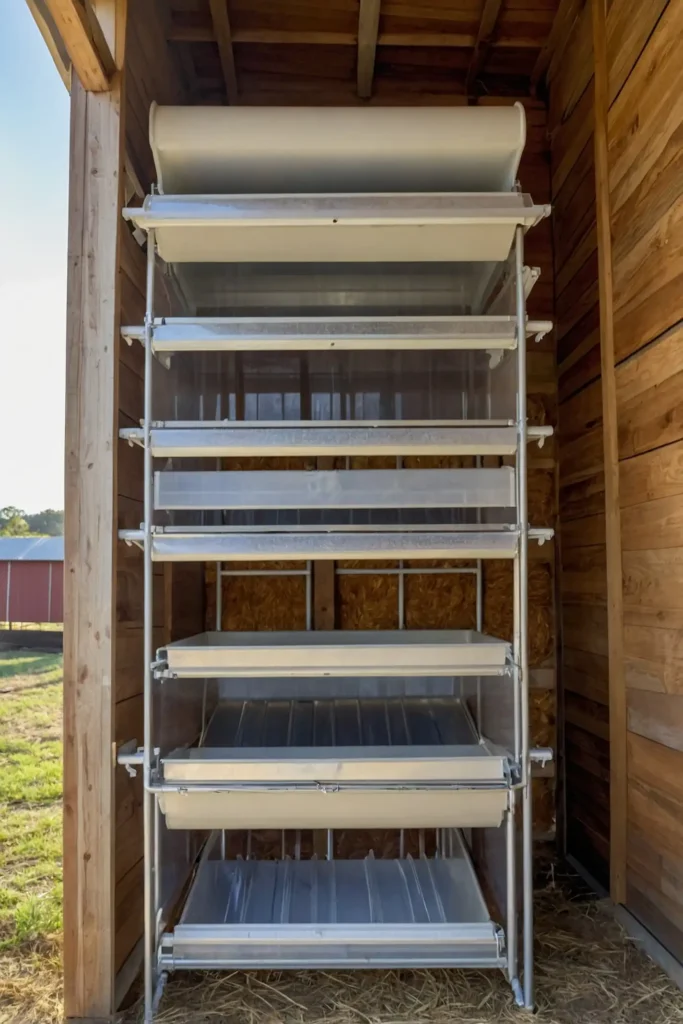
Build feed bins directly into coop walls with external filling access and internal dispensing.
This system keeps feed dry, rodent-proof, and easily accessible without entering the coop.
Use transparent PVC pipes as level indicators so you can monitor feed levels from outside.
Design the dispensers to release feed automatically into troughs when chickens step on a platform.
This design eliminates feed waste and keeps the coop cleaner.
7: Hideaway Dust Bath Station
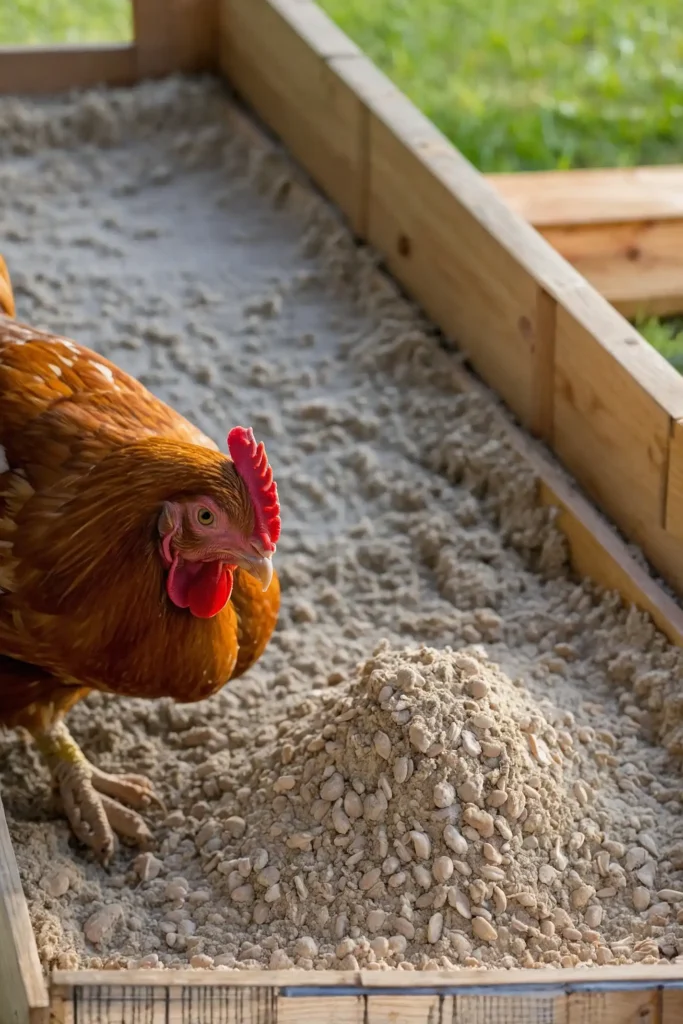
Create a dedicated indoor dust bathing area that stays dry year-round.
Build a shallow wooden box with a hinged lid in a corner of the coop, filled with a mixture of fine sand, wood ash, and diatomaceous earth.
This gives your chickens access to essential dust baths even during wet weather.
The lid prevents the mixture from being kicked into nesting boxes and feed areas.
Your chickens will maintain healthier feathers and experience fewer parasite issues.
8: Multi-Level Roosting Jungle Gym
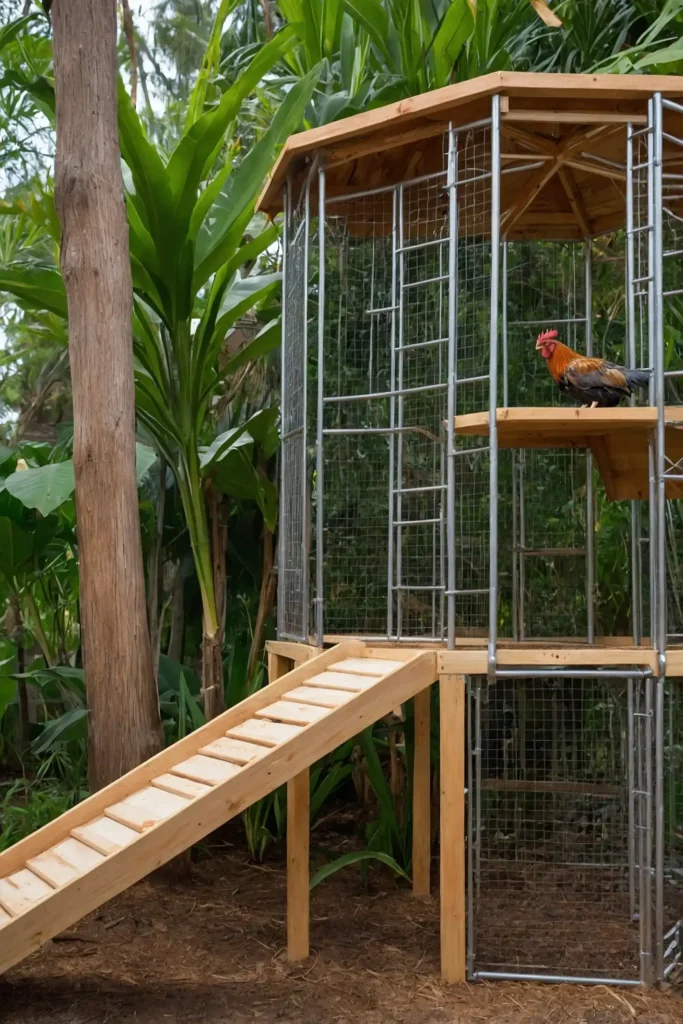
Design a playground-style roosting area with ramps, platforms, and perches at various heights.
This encourages exercise and reduces boredom during confinement periods.
Connect different levels with gentle-sloped ramps to accommodate older or less agile birds.
Position the structure away from feeding and nesting areas to keep those zones clean.
This design significantly reduces aggressive behaviors by providing multiple activity zones.
9: Egg Collection Conveyor System
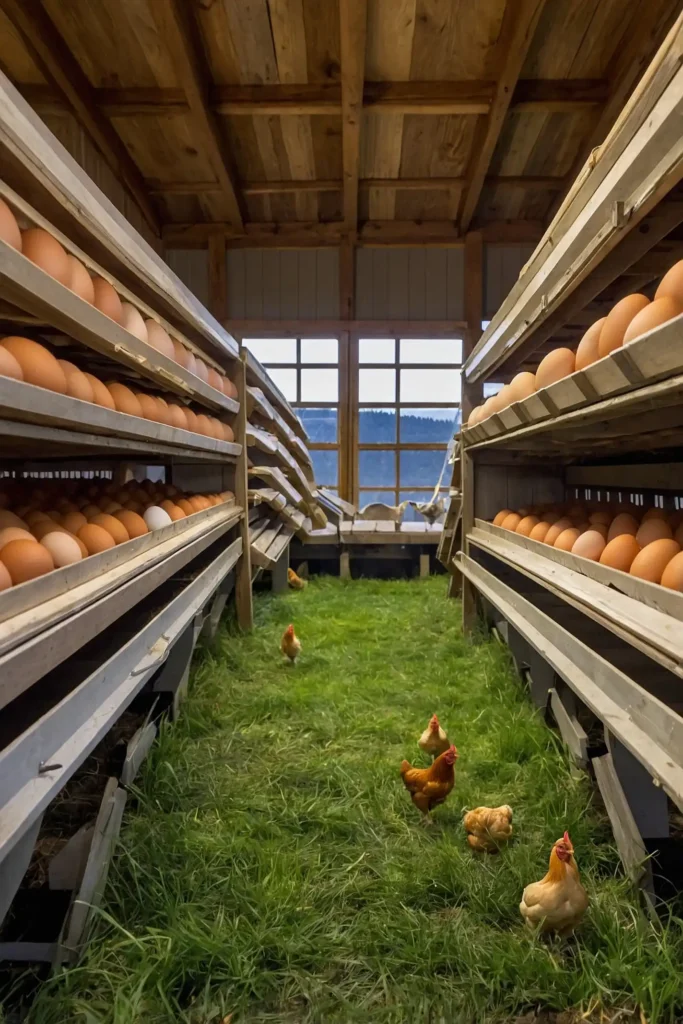
Install sloped nesting boxes with a gentle roll-away design that delivers eggs to an external collection drawer.
This prevents egg breakage and keeps eggs cleaner.
Line the rolling surface with soft artificial turf to cushion the eggs’ journey.
The external drawer allows for egg collection without disturbing laying hens.
This system virtually eliminates the problem of egg-eating in your flock.
10: Under-Floor Heating System
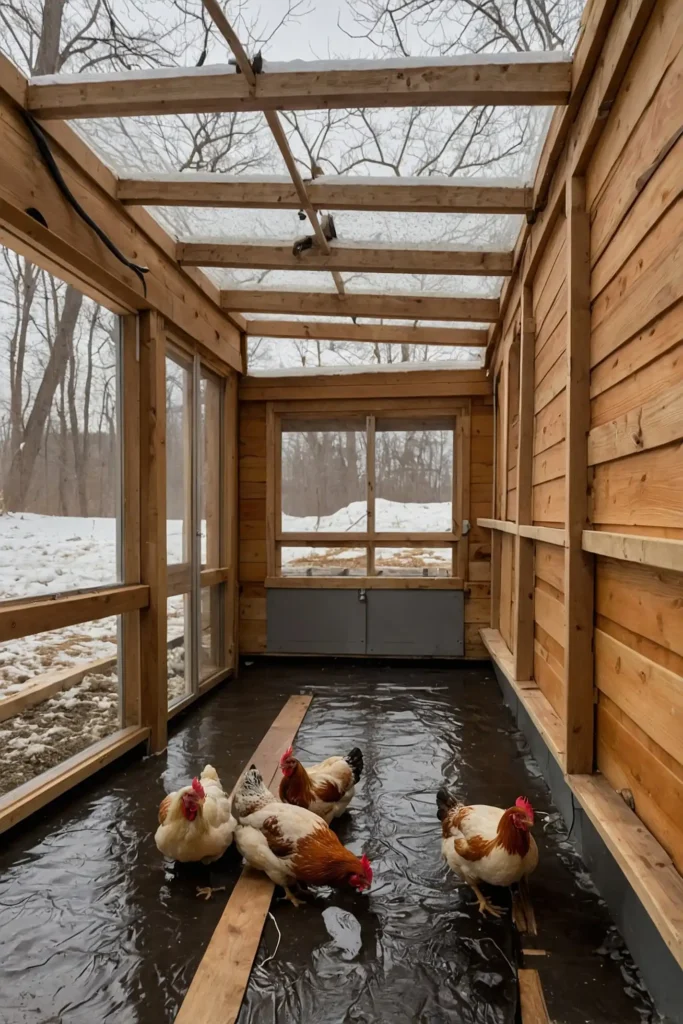
Install electric heating mats beneath a portion of the coop floor, covered with a thin layer of bedding.
This creates a warm zone that chickens can access during cold weather.
Use a thermostat to maintain temperatures between 45-50°F during the coldest months.
The system uses minimal electricity while significantly boosting winter egg production.
Position the heated area away from roosting spots to ensure chickens don’t become dependent on artificial heat.
11: Integrated Watering System with Rain Collection
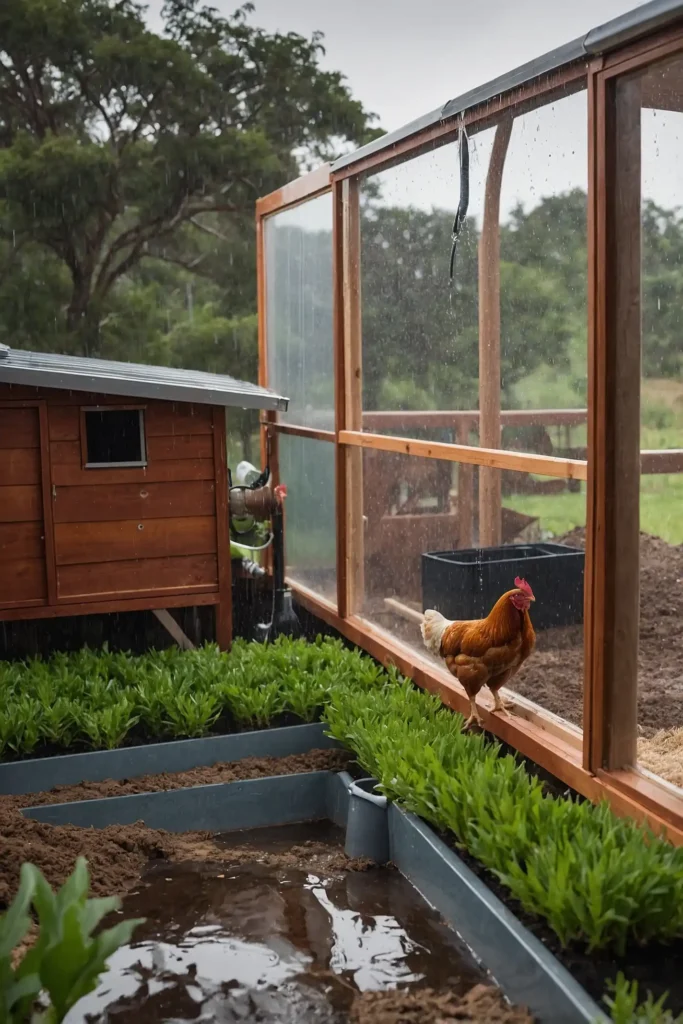
Create a rainwater collection system that feeds directly into interior waterers. Install gutters on the coop roof that channel water into a filtering barrel.
Use food-grade hosing to connect the barrel to nipple waterers mounted at chicken height inside the coop.
Add a small solar-powered pump to maintain consistent water pressure.
This system provides fresh, clean water while reducing your daily chore list.
12: Removable Partition Walls
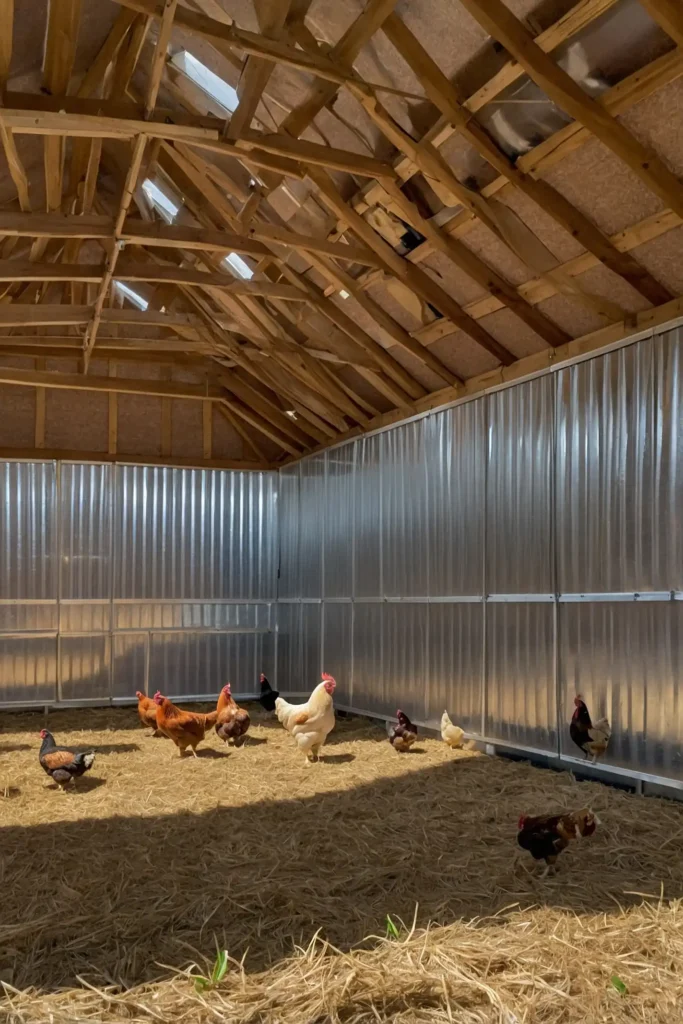
Build your coop with removable interior walls that allow you to reconfigure the space as needed.
This makes it easy to separate broody hens, introduce new birds, or create a temporary hospital area.
Use lightweight corrugated plastic panels that slide into floor and ceiling channels.
Add small windows in the partitions to reduce stress when birds need to be separated.
This flexibility makes your coop adaptable to changing flock dynamics.
13: Automated Pop Door Timer System
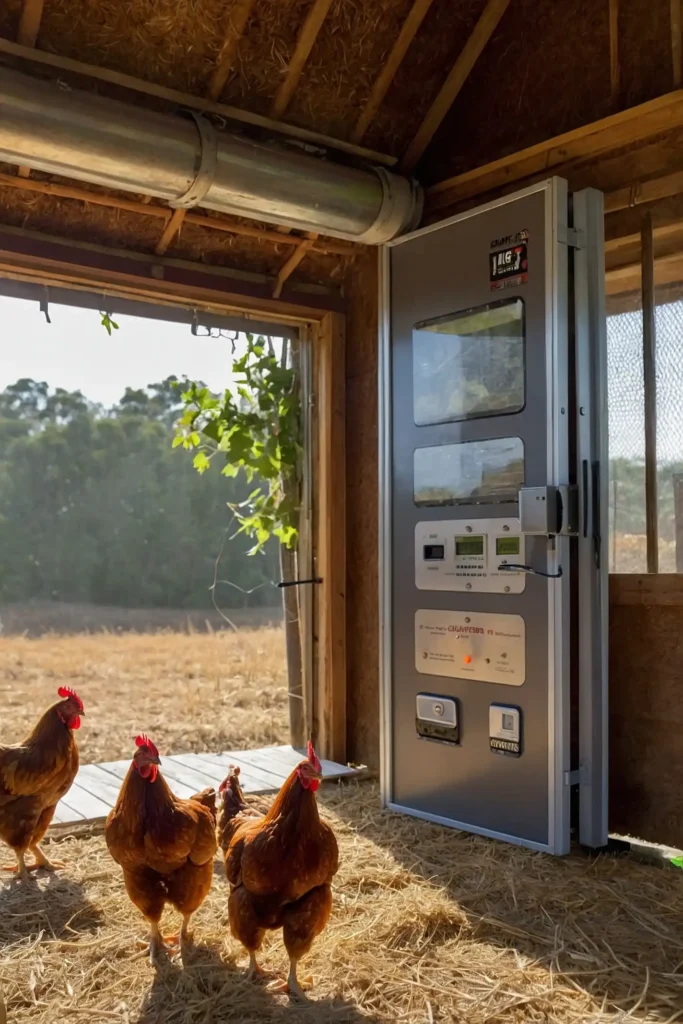
Install a programmable door that opens at sunrise and closes at sunset.
This gives your chickens maximum free-range time while ensuring predator protection.
Mount the door on a track system with a counterweight for smooth operation.
Add a light sensor or timer to control the opening and closing mechanism.
This automation eliminates your need to be present for daily lockup while protecting your flock.
14: Interactive Treat Dispensers
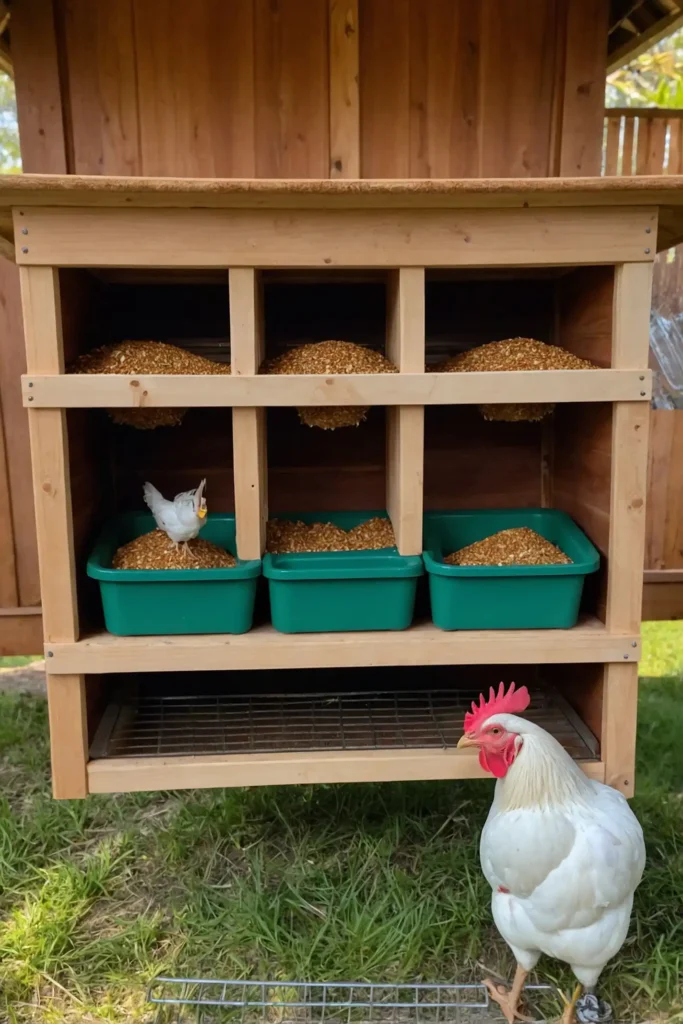
Mount puzzle feeders that release treats when chickens peck or manipulate specific parts.
These provide mental stimulation and reduce bullying behaviors during confinement.
Fill the dispensers with scratch grains or dried mealworms for occasional rewards.
Position several around the coop to prevent dominant birds from monopolizing the treats.
This enrichment reduces feather-picking and other stress behaviors.
15: Climate-Controlled Nesting Area
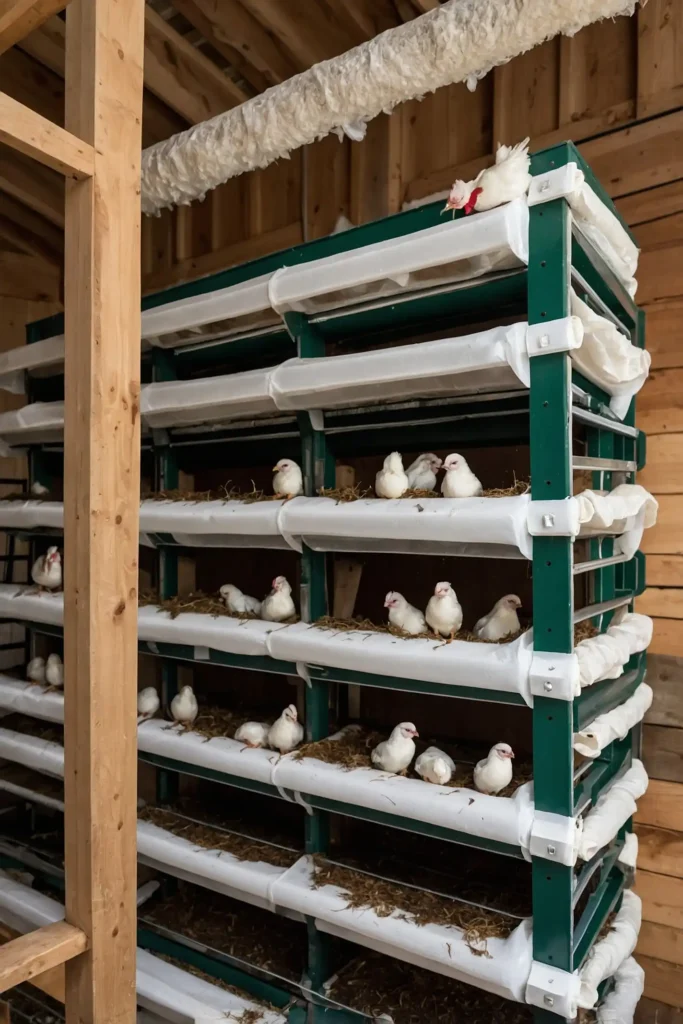
Create a separate nesting section with improved insulation and ventilation control. This maintains ideal egg-laying temperatures year-round.
Use rigid foam insulation covered with predator-proof hardware cloth in the nesting area.
Add adjustable vents that allow you to modify airflow based on seasonal needs.
This specialized zone increases winter egg production and reduces summertime heat stress.
16: Integrated First Aid Station
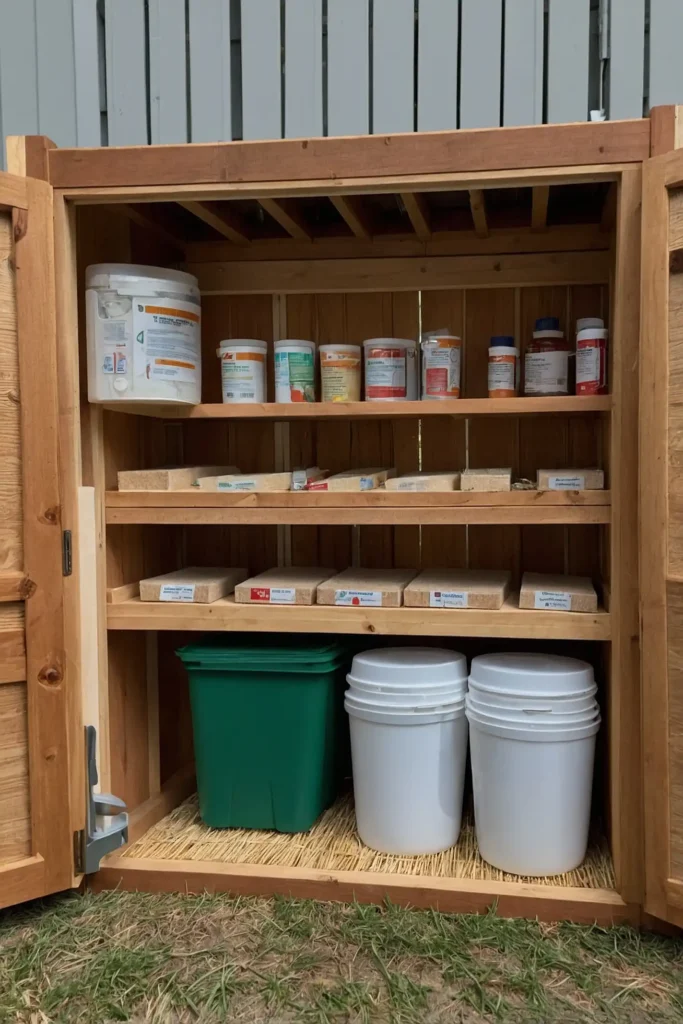
Build a dedicated storage area for chicken healthcare supplies right into the coop wall. Include compartments for medications, tools, and bandages.
Mount the cabinet high enough to be out of reach of curious beaks but easily accessible for you. Add a fold-down shelf that creates a treatment surface when needed.
Having supplies at hand means faster response times for injuries or illness.
17: Bio-Active Deep Litter Management System
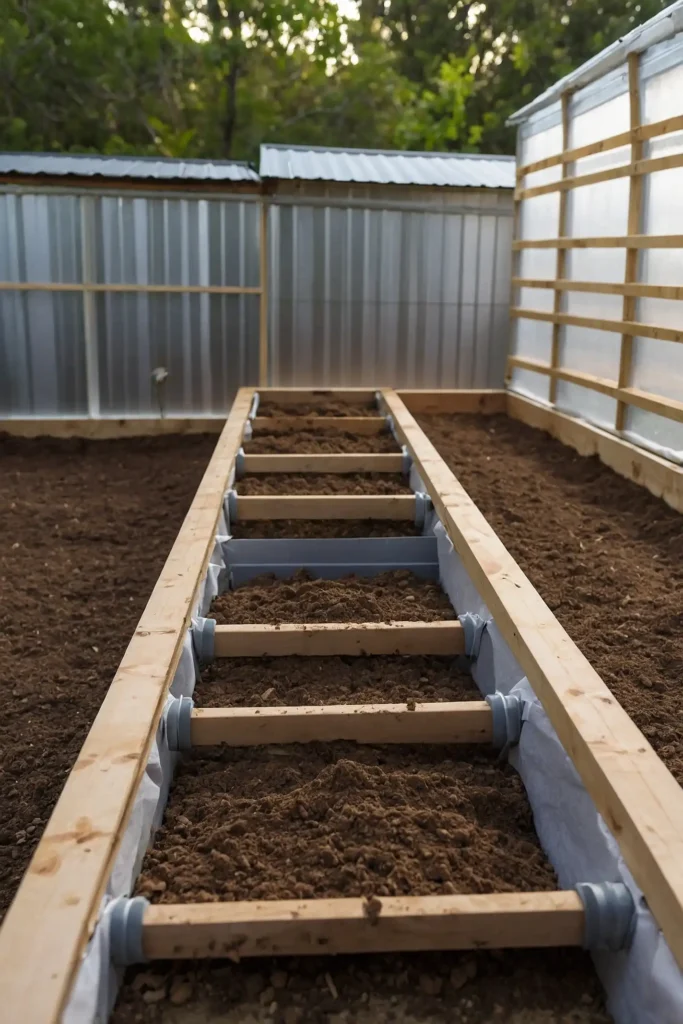
Design your coop floor for an efficient deep litter system.
Install a concrete or packed earth floor with good drainage and 12-inch sidewalls to contain the bedding materials.
Add ventilation near the floor level to keep the deep litter properly aerated.
Introduce beneficial microbes through compost starter to speed decomposition.
This system creates self-maintaining bedding that actually improves your soil when cleaned out seasonally.
18: Predator-Proof Observation Windows
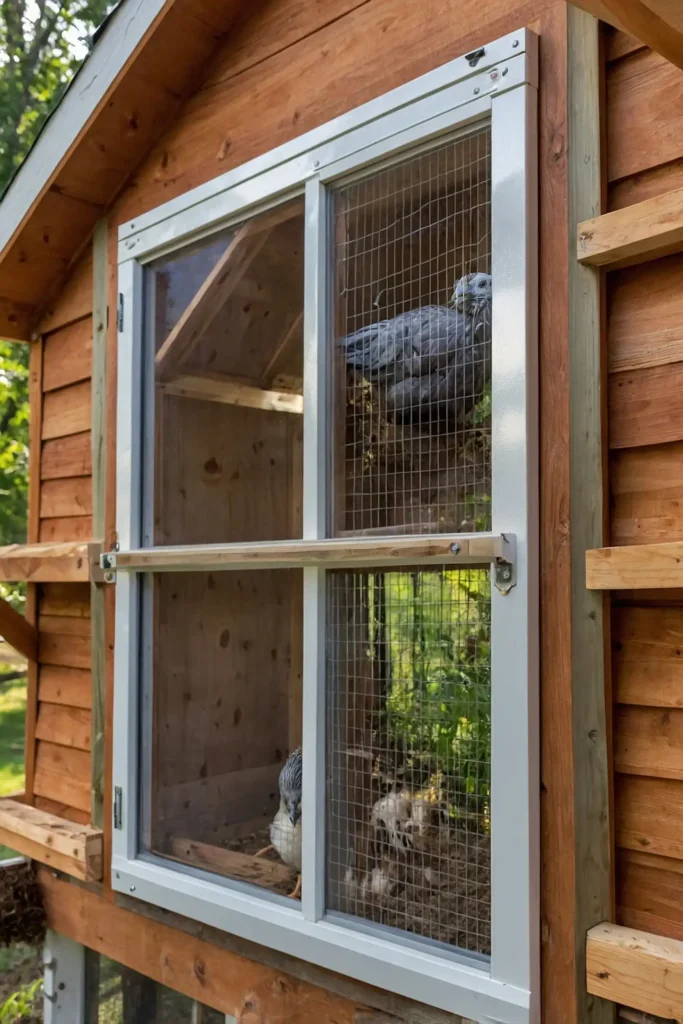
Install shatterproof acrylic windows with metal security screens that allow you to check on your flock without entering the coop.
Position these at eye level around the coop perimeter.
Add swing-out shutters that provide shade during summer and additional insulation in winter. Seal all edges with weather stripping to prevent drafts.
These windows improve your monitoring ability while maintaining a secure environment.
19: Hidden Broody Hen Suite
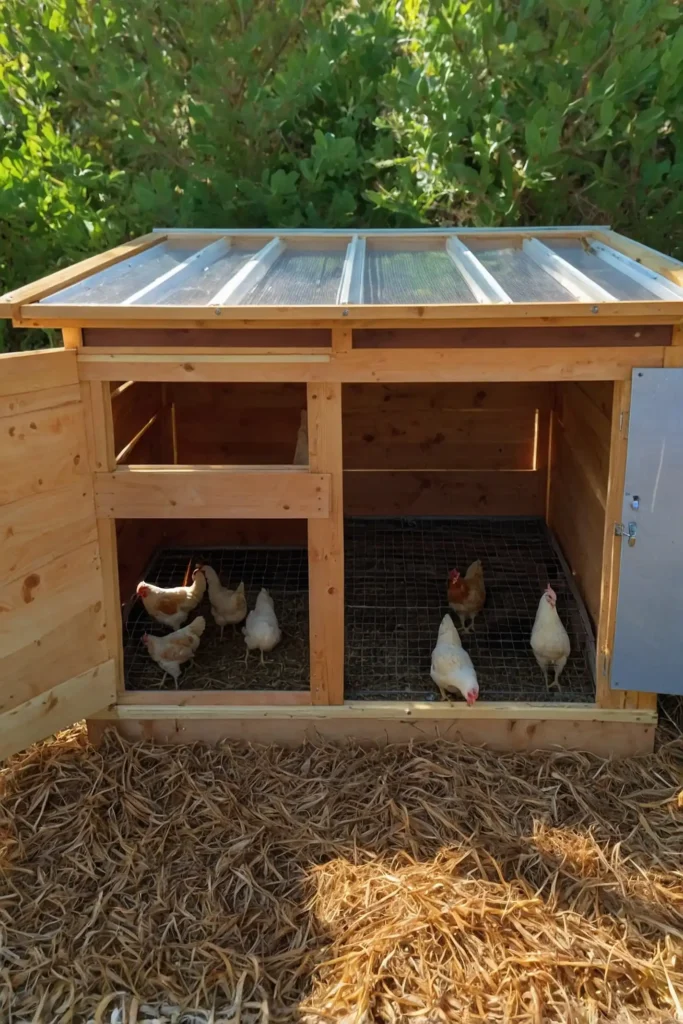
Create a separate, secluded space for broody hens and chicks.
Design a small section of the coop with a private entrance that only smaller birds can access.
Equip this area with a lower roosting bar and appropriately sized feeding equipment.
Add extra insulation to maintain consistent temperatures for developing chicks.
This safe space increases your hatching success rate and chick survival.
20: Soundproofed Roosting Area
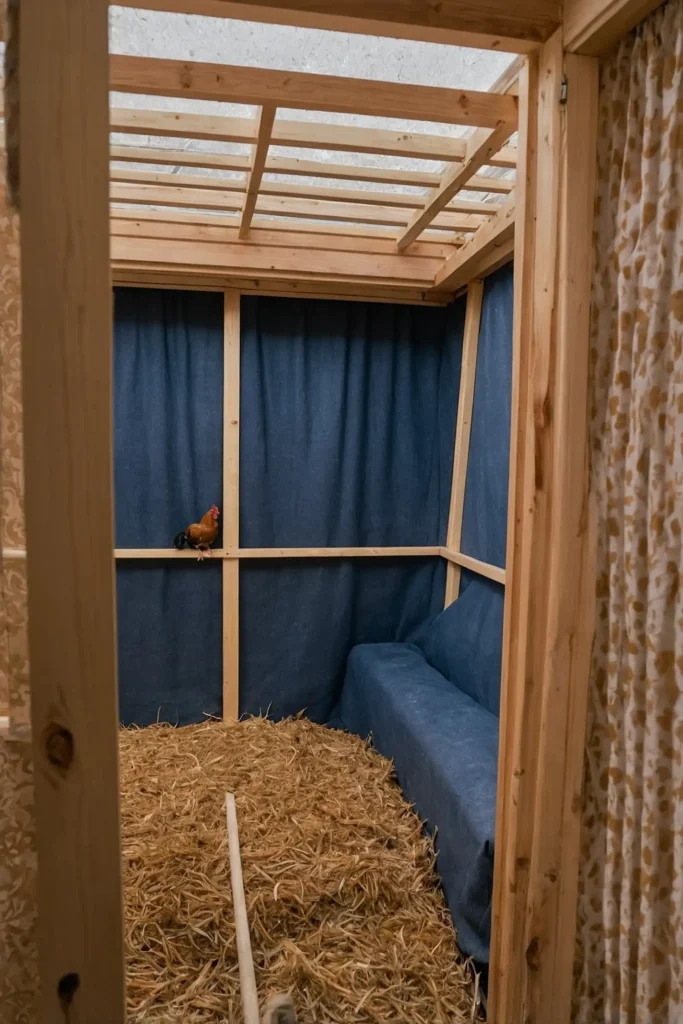
Design a partially soundproofed section for your roosting bars to minimize early morning crowing disturbances.
Use recycled denim insulation or acoustic foam panels on walls near roosts.
Add heavy fabric curtains that can be closed around the roosting area at night.
Position this zone as far from neighboring properties as possible.
This thoughtful feature helps maintain good relationships with neighbors while keeping your roosters comfortable.
21: Integrated Record-Keeping Station
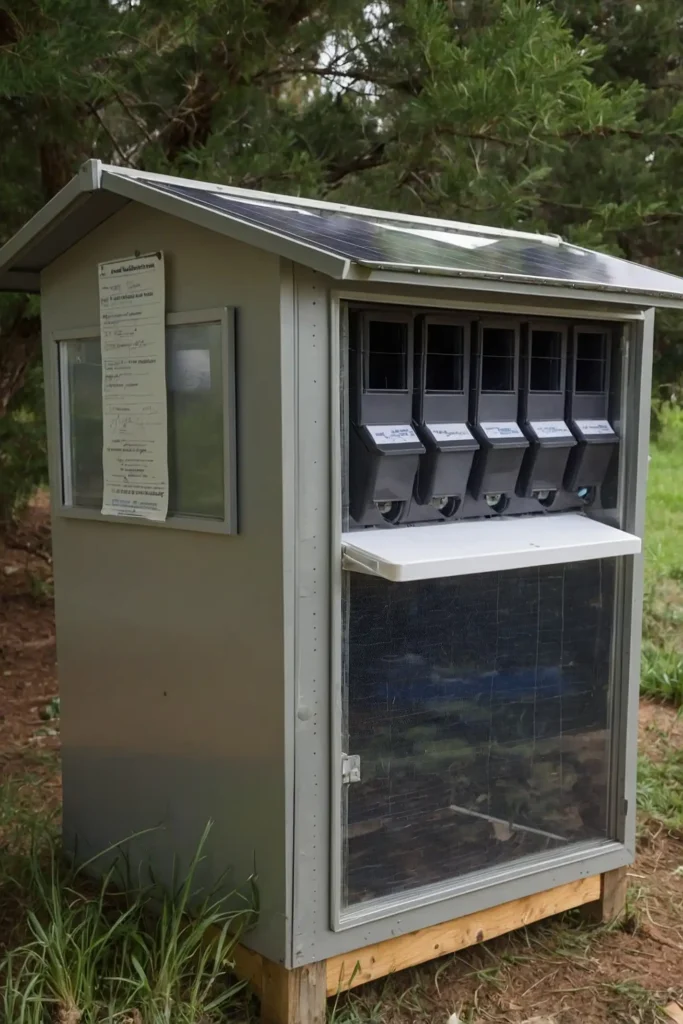
Mount a weatherproof cabinet near the coop entrance for tracking egg production, feed consumption, and flock health observations.
Include a small whiteboard for daily notes.
Install a clear plastic sleeve for keeping printed flock records and care schedules.
Add a solar-powered motion light for checking records during early morning or evening visits.
This organization system helps you identify patterns and potential problems earlier.
Conclusion
Your chickens deserve a well-designed home that meets their needs while making your caretaking easier.
Choose the ideas that best fit your specific situation, and watch your flock thrive in their upgraded space!

